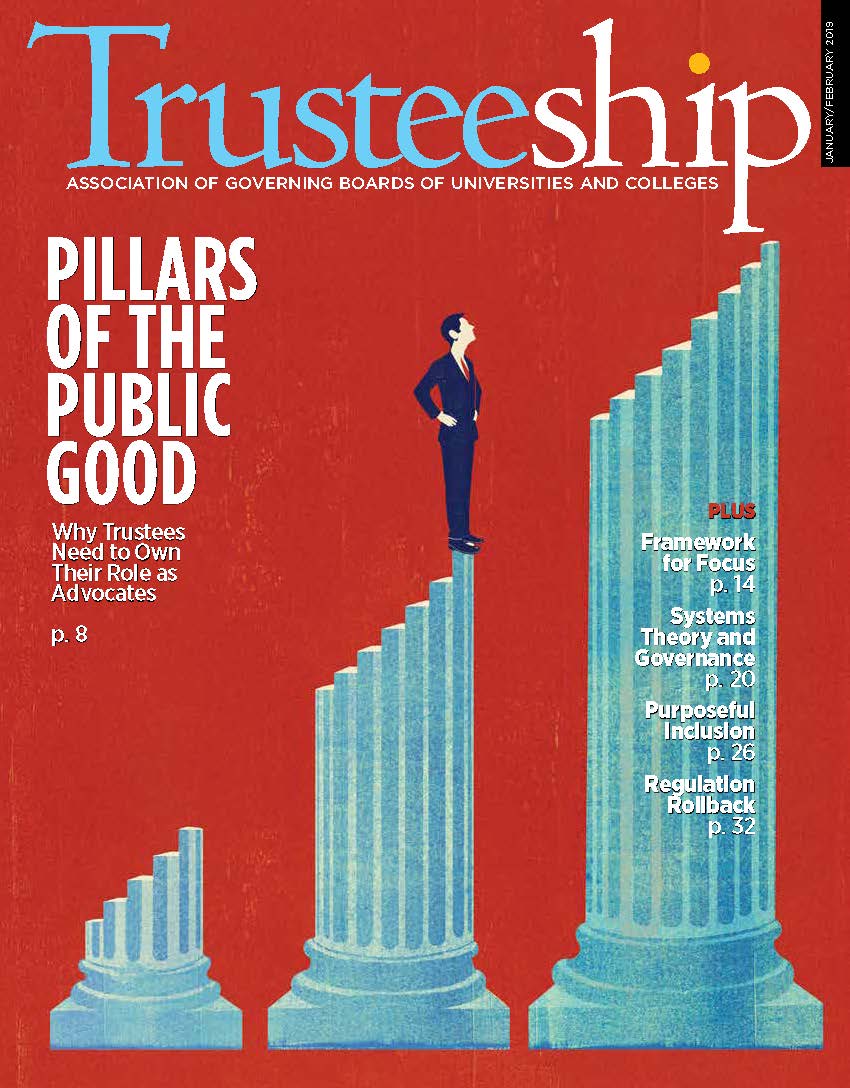Trusteeship: January/February
Volume 27, Number 1 // January/February 2019

Table of Contents
Features
Pillars of the Public Good
By Genevieve G. Shaker and William M. Plater
In an era of growing distrust of higher education, how can trustees think more deliberately about their commitment to the public good? The authors provide 12 steps for boards.
A Framework for Focus
By Kevin P. Kearns
As institutions face heightened public scrutiny and accountability, governing boards need to find a balance for their myriad responsibilities. A simple, yet powerful, dashboard can help them embrace their many roles—and assess their strengths and weaknesses.
An Educational Relationship
By Joseph G. Burke, A. Paul Bradley Jr., and William Donaldson
Systems theory—typically associated with business management—can be used to increase the effectiveness of higher education governance. The authors examine how the discipline can strengthen board focus, roles, and responsibilities.
Purposeful Inclusion
By Jennifer Jefferson
Outdated perceptions of gender roles create barriers for women who aspire to academic leadership positions. How can boards think differently about the qualities they want in a leader and attract more women?
The Rollback
By Terry Hartle
At the halfway point in the Trump administration, Trusteeship looks at changes in federal regulation of higher education, the impact on institutions, and what’s on the horizon for 2019.
Features
Legal Standpoint
When to Seek the Advice of a Lawyer
By Steve Dunham
Focus on the Presidency
A Lost Opportunity in Academic Searches
By James D. Herbert
View from the Board Chair
Serving as Ambassador
By Fran M. Albrecht
A Question For…
Verne Sedlacek
How Can Institutions Use Stress Testing to Ensure Their Fiscal Health?

